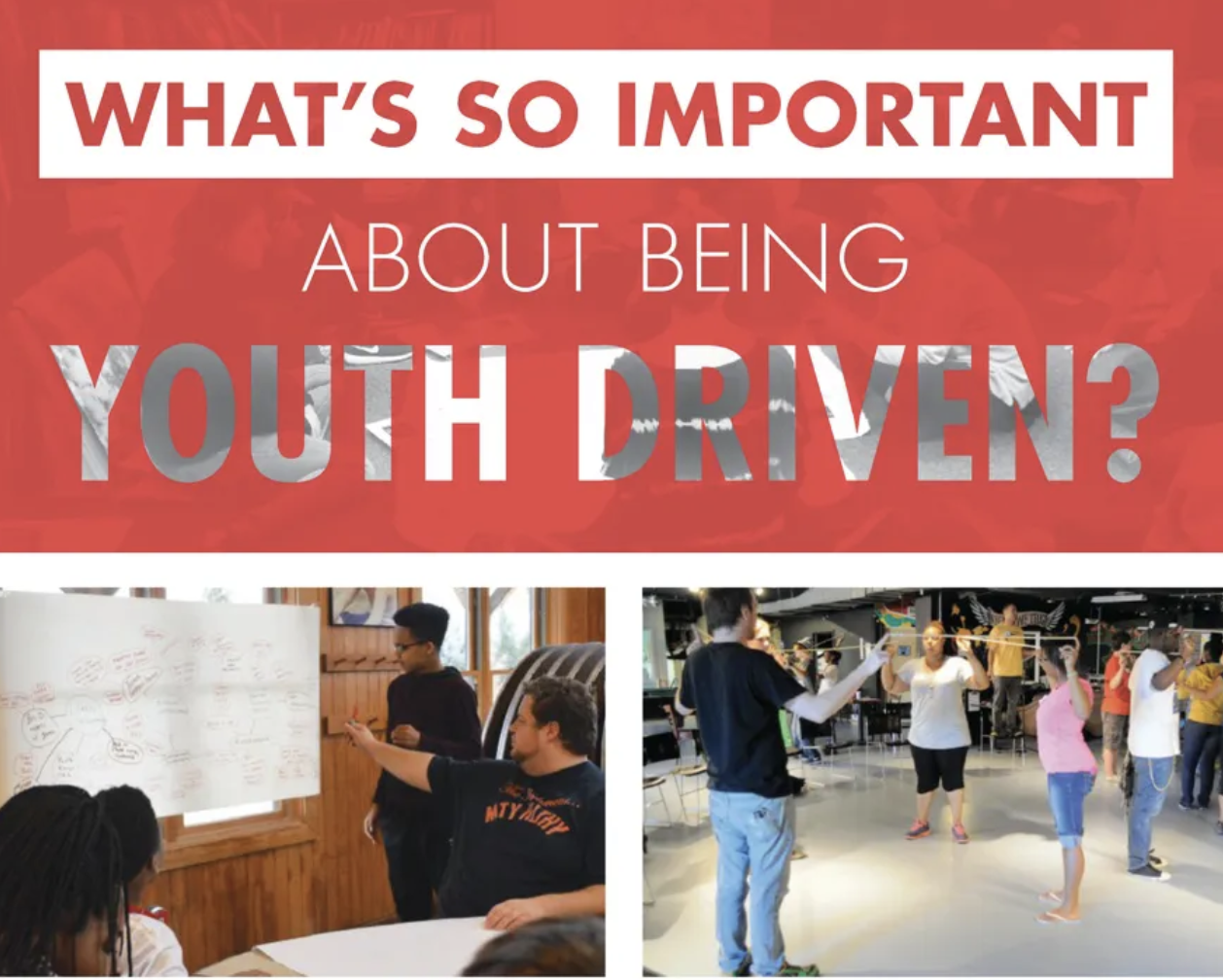WHAT’S SO IMPORTANT ABOUT BEING YOUTH DRIVEN?
John Weiss | published by www.naaweb.org (Spring 2016)
It’s a typical week at the Neutral Zone: A group of teens is editing a book of poems from a nationally award-winning poet that they’ll publish next month. Another group, facilitated by Vanessa, a high school junior, is making a collaborative art mural. Yet another group of teens reviews grant requests from their peers and will award the $2,000 they raised to other youth-driven projects at the Center. Two teens learn to set up microphones to record a four-piece rock band. Neutral Zone’s Board of Directors, which includes 12 teens, reviews monthly financials, discusses fundraising efforts and approves a new human resource policy.
Over the past decade, communities across the country have come to understand that out-of-school time programs can have significant effect on the positive development of youth. Participant in organized non-school activities enhances academic, social, civic and health outcomes, and reduces risky behaviors. Despite growing national interest in such opportunities for older youth, programs with meaningful and developmentally appropriate engagement remain few and far between. As a result, man organizations struggle to attract and retain teens.
Engaging Older Youth: Youth Driven Spaces
Since 1998, the Neutral Zone in Ann Arbor, Michigan, has used a youth-driven approach to attract and engage teens. This approach supports older adolescents’ needs for efficacy, responsibility and agency, and actively engages them in organizational and community leadership. In a youth-driven space (YDS), youth are involved in program and organizational decisions. Adults support youth to lead activities, run advisory boards and make decisions about the physical space, activities offered, how money is spent, organizational policy and even staff hiring.
Theoretical Framework: YDS Pillars
FOSTERING TEENS’ INTRINSIC MOTIVATION
SUPPORTING YOUNG PEOPLE’S DEVELOPMENTAL NEEDS
BUILDING YOUTH-ADULT PARTNERSHIPS
In supporting intrinsic motivation, adult staff build on teens’ interests, ideas and curiosity to challenge them to set and achieve their own goals. Supporting young peoples’ developmental needs occurs by building teens’ competence through active and collaborative projects in leadership and the arts. These experiences provide youth plentiful opportunities to explore who they are, and encourages them to discover their tallents and abilities. In youth-adult partnerships, adults scaffold young people to run their own initiatives and make genuine decisions. Their partnership emphasizes mutuality among youth and adults with a focus on shared leading and learning.
YDS Dissemination and Benefits
To date, Neutral Zone has worked intensively with more than 40 out-of-school time and high school-based programs to provide training and coaching in YDS. This work, like our theoretical framework, involves supporting youth-adult teams who provide leadership for instilling YDS programs and practice at their home organization or school.
As programs adopt a YDS approach, youth develop 21st-century skills and gain in their socio-emotional competencies. Staff experience greater satisfaction working with youth with higher levels of engagement and motivation. Most important, communities benefit by building a civil society whose youth are civically engaged and prepared to be active citizens in a a democratic society.

